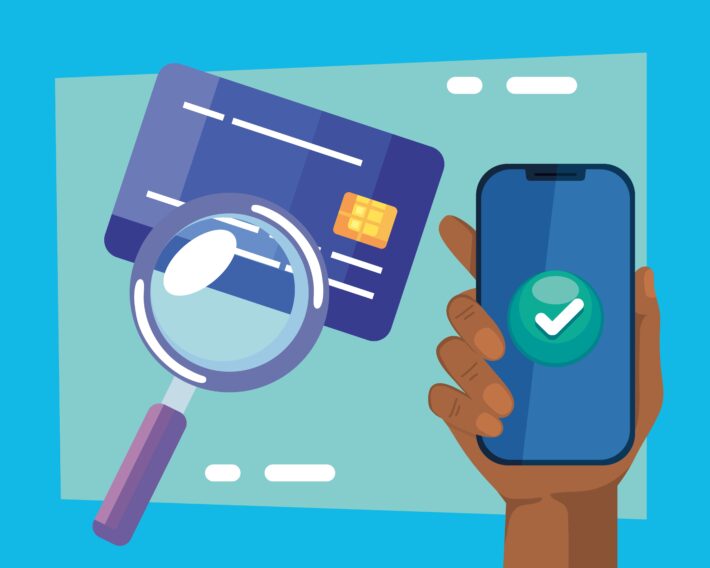The Role Of Identity Verification In Age Verification Processes

In an increasingly digital world, the significance of identity verification cannot be overstated. It serves as the foundation for safeguarding individuals and businesses against fraud and unauthorized access. This article examines the critical role of identity verification, identity verification in age verification particularly in age verification processes, emphasizing its necessity and the risks associated with neglecting it.
We will discuss various methods utilized for effective verification, the challenges that businesses encounter, and strategies for ensuring secure practices.
This exploration aims to illuminate this essential aspect of modern security.
What is Identity Verification?
Identity verification is an essential process that confirms an individual’s identity through various methods and technologies, ensuring that the individual is indeed who they assert to be. This process has gained significant importance in today’s digital environment, where secure access to online platforms and the protection of personal information are of utmost priority.
It includes user verification practices that employ document verification, biometric verification, and other authentication methods to mitigate the risks of identity theft and fraudulent activities.
Furthermore, identity management systems are implemented to streamline verification processes, ensuring compliance with privacy regulations and verification standards.
Why is Identity Verification Important?
Identity verification is essential for maintaining online safety and ensuring compliance with legal regulations, as it plays a critical role in preventing fraudulent activities that could result in substantial financial losses for both businesses and individuals.
As the digital landscape expands, so too do the threats associated with identity fraud, making user trust and data protection paramount concerns for organizations that manage sensitive personal information.
By implementing comprehensive identity verification processes, organizations can strengthen their customer identity assurance systems, thereby enhancing the integrity of online transactions and safeguarding against identity theft.
What are the Risks of Not Verifying Identity?
The risks associated with failing to verify identity can result in severe consequences, including identity theft, fraud, and financially damaging fraudulent activities that impact both consumers and businesses. Without proper identity verification, organizations expose themselves to legal liabilities due to non-compliance with regulations designed to protect personal data.
A lack of verification can lead to inadequate risk assessment, increasing vulnerability to cyber threats and undermining the overall security of sensitive information.
For example, the Equifax breach in 2017 not only compromised the personal information of millions but also highlighted the critical need for robust identity verification procedures.
Organizations can mitigate risks by implementing multi-factor authentication and regularly updating their verification methods to comply with evolving regulations, such as the General Data Protection Regulation (GDPR) and the California Consumer Privacy Act (CCPA).
By prioritizing effective verification practices, businesses not only protect themselves from potential legal repercussions but also foster consumer trust, which is essential in today’s data-sensitive environment.
Ultimately, adopting a proactive approach to identity verification is vital for safeguarding both organizational integrity and the security of personal data.
What is Age Verification?
Age verification is the process of confirming an individual’s age to ensure adherence to age restrictions for accessing specific online content, services, and transactions. This process is a critical component of managing digital identity, particularly concerning age-restricted content such as gaming, alcohol sales, and adult material.
By employing age verification software, organizations can efficiently validate user age and prevent unauthorized access, thus enhancing online safety and ensuring compliance with age verification regulations.
Why is Age Verification Necessary?
Age verification is imperative to ensure compliance with legal standards and regulations designed to protect minors from accessing age-restricted services and content online. In a digital landscape where exposure to inappropriate materials can have significant repercussions, the implementation of effective age verification procedures is crucial for maintaining online safety.
Additionally, these measures foster user trust in platforms that emphasize the responsible management of personal information and adhere to age verification guidelines, thereby reinforcing their commitment to regulatory compliance.
What are the Consequences of Failing to Verify Age?
Failing to verify age can lead to substantial consequences, including legal repercussions for non-compliance with age restrictions concerning access to age-restricted content and services. Such oversights may result in significant fines for companies, erosion of customer trust, and damage to their reputation, thereby fundamentally undermining their commitment to online safety measures.
Without adequate age verification, minors may inadvertently gain access to inappropriate material, leading to potential harm and increased scrutiny from regulatory bodies and advocacy groups.
The implications of inadequate age verification extend beyond financial penalties; they also impact brand loyalty and long-term profitability. For businesses, implementing robust age verification processes is essential to safeguard their operations and cultivate a responsible corporate image.
Consumers, in turn, depend on these systems to protect vulnerable individuals from exposure to harmful content. A comprehensive approach to age verification not only mitigates risks for users but also demonstrates a business’s dedication to ethical practices and regulatory compliance, ultimately contributing to a safer digital environment for all stakeholders.
What Methods are Used for Identity Verification in Age Verification Processes?
In age verification processes, a range of identity verification methods is utilized to ensure accurate validation of user age, thereby enhancing compliance and security.
These methods may include document verification, which involves the analysis of government-issued identification, biometric verification that employs unique physical attributes for authentication, and knowledge-based verification, which assesses the user’s knowledge of information that only they should possess.
Each method contributes significantly to the establishment of a comprehensive identity verification framework that facilitates secure access and promotes online safety.
1. Document Verification
Document verification serves as a fundamental approach in the realm of identity verification, wherein government-issued identification and other relevant documents are meticulously examined to confirm an individual’s age and identity. This process typically encompasses the scanning and validation of the authenticity of the submitted documents, thereby ensuring data accuracy and adherence to age verification regulations.
By instituting rigorous verification standards, organizations can substantially reduce the risk of fraudulent activities and protect vulnerable populations from age-related online threats. However, challenges such as the proliferation of counterfeit documents and the variability of identification formats across different jurisdictions may complicate the verification process.
Fortunately, advancements in technology, particularly in artificial intelligence and machine learning, are significantly enhancing the efficacy of document verification. These technologies facilitate real-time analysis and enable cross-referencing against databases for authenticity verification. Such innovations not only streamline operational workflows but also enhance confidence in the accuracy of age verification processes, ensuring compliance with legal regulations while preserving user privacy.
2. Biometric Verification
Biometric verification employs unique biological traits, including fingerprints, facial recognition, and iris scans, to provide secure authentication in identity verification processes.
This innovative methodology not only enhances security measures but also optimizes the user experience by minimizing reliance on traditional passwords or PINs, which are prone to being forgotten or compromised. A variety of biometric technologies, such as voice recognition and behavioral biometrics, support diverse applications and significantly enhance user trust.
Users can utilize secure authentication through devices such as fingerprint scanners, advanced cameras for facial recognition, and iris-scanning equipment. These technological advancements not only strengthen security protocols but also promote a sense of safety and reassurance among users, contributing to their growing popularity in sectors such as finance, healthcare, and personal devices.
3. Knowledge-based Verification
Knowledge-based verification involves inquiring about personal information that only the user would know, serving as a method for user verification and age confirmation. This approach not only aids in identity proofing but also addresses verification challenges by enabling users to demonstrate their identity without relying solely on physical documents.
By integrating knowledge-based verification into broader identity verification practices, organizations can enhance their security measures while simultaneously improving the user experience. This method effectively mitigates the risk of fraud by ensuring that only the rightful owner can respond to specific questions, such as those pertaining to past addresses or financial transactions.
However, it is important to acknowledge the challenges associated with this method; users may occasionally forget the necessary details or find the questions difficult to answer, which could obstruct access. Therefore, it is essential to balance the complexity of the questions with the need for efficient verification to maintain its effectiveness across various contexts.
What are the Challenges of Implementing Identity Verification in Age Verification Processes?
Implementing identity verification within age verification processes poses several challenges that organizations must address to ensure effective compliance and security. These challenges encompass privacy concerns related to the management of sensitive personal information, the accuracy and reliability of verification methods, and the costs and resources required to maintain secure systems and processes.
Effectively addressing these challenges is crucial for establishing a robust identity verification framework that safeguards user data while enabling seamless access.
1. Privacy Concerns
Privacy concerns are of utmost importance in identity verification, particularly as organizations collect and process sensitive user data during verification procedures. Ensuring data privacy and implementing effective consent management practices are critical components of identity assurance systems, as they contribute to building user trust and ensuring compliance with privacy laws.
Organizations must prioritize transparency by clearly communicating their data handling practices to users. This includes informing individuals about the specific information being collected, its intended use, and the duration for which it will be retained.
The adoption of robust security measures to protect sensitive data can significantly enhance user confidence in the verification process. Implementing privacy-enhancing technologies and regularly updating consent mechanisms will enable users, enabling them to manage their data preferences effectively.
By fostering a culture of privacy awareness, organizations can not only ensure regulatory compliance but also strengthen their reputation and cultivate long-term relationships with their customers.
2. Accuracy and Reliability
The accuracy and reliability of identity verification methods are paramount in preventing fraud and ensuring effective verification processes. Organizations must adopt robust verification technologies and frameworks that enhance data accuracy, as any discrepancies can result in unauthorized access and potential security breaches.
In today’s digital era, where data serves as the cornerstone of trust, integrating advanced technologies such as biometric recognition, artificial intelligence, and machine learning can significantly enhance the effectiveness of identity verification.
These methodologies not only streamline the verification process but also provide a heightened level of security by analyzing unique characteristics and patterns that are challenging to replicate. Additionally, implementing multifactor authentication can add an extra layer of protection, making it increasingly difficult for malicious actors to compromise sensitive information.
By leveraging these innovative approaches, organizations can ensure that their identity verification processes remain both reliable and resilient, ultimately fostering a safer environment for their users.
3. Cost and Resources
Cost and resource allocation represent significant challenges in the implementation of identity verification solutions, particularly for organizations striving to comply with regulatory requirements while ensuring the security of their systems. Investing in advanced verification technology can entail a considerable financial commitment, which may deter some businesses from adequately addressing their identity verification needs.
To effectively tackle these financial implications, a strategic approach is essential. Organizations can consider various budgeting strategies that facilitate the integration of identity verification into their operations without straining their resources.
This may involve identifying scalable solutions that can adapt to their growth, thereby reducing initial costs. Adopting cost-effective technologies not only meets compliance requirements but also enhances operational efficiency.
Ultimately, the long-term advantages of investing in reliable verification systems—such as minimizing the risk of fraud and enhancing customer trust—significantly outweigh the initial expenditures, rendering it a prudent financial decision for any forward-thinking organization.
How Can Businesses Ensure Secure and Effective Identity Verification for Age Verification?
To ensure secure and effective identity verification for age verification, businesses must adopt comprehensive strategies that involve collaboration with reputable identity verification providers and the implementation of multi-factor authentication practices.
These approaches enhance the integrity of identity checks by employing a variety of verification methods, thereby fostering user trust and aligning with best practices in verification that adhere to regulatory compliance requirements.
1. Partnering with Trusted Identity Verification Providers
Partnering with reputable identity verification providers is essential for organizations aiming to implement effective solutions tailored to their specific needs and compliance requirements. These providers deliver advanced identity verification solutions that enhance user verification processes, ensuring that online platforms operate within legal frameworks while safeguarding sensitive user data.
In selecting an identity verification partner, organizations should evaluate criteria such as the provider’s industry reputation, the technological advancements that enable seamless user experiences, and the robustness of compliance capabilities to meet regulations across various jurisdictions.
A reputable provider not only streamlines operations but also fosters customer trust through established security measures. By leveraging cutting-edge technology, organizations can attain real-time risk assessments and bolster fraud detection efforts.
Ultimately, forming strategic partnerships with reliable identity verification providers fortifies organizational security and cultivates trust in digital transactions, underscoring the significance of these collaborations in today’s technology-driven landscape.
2. Implementing Multi-factor Authentication
The implementation of multi-factor authentication (MFA) significantly enhances secure authentication by requiring users to provide multiple forms of verification, thereby substantially reducing the risk of unauthorized access. This additional layer of security not only strengthens verification processes but also cultivates user trust, as individuals feel more secure when accessing identity systems.
MFA typically utilizes a combination of three factors: something the user knows, such as a password; something the user possesses, such as a mobile device or smart card; and something the user is, which includes biometric information like fingerprints or facial recognition.
This comprehensive approach not only fortifies identity verification but also ensures compliance with the regulations that many enterprises encounter today. By employing MFA, organizations can effectively mitigate the risks of data breaches and account takeovers, thereby safeguarding sensitive information.
Ultimately, this practice fosters a culture of security awareness among users, reinforcing their confidence in the systems they utilize.
3. Regularly Updating Verification Processes
Regularly updating verification processes is crucial for organizations to remain proactive in the face of evolving threats and to comply with changing regulations. By adopting the latest verification technologies and best practices, businesses can enhance their identity management systems and ensure continuous data protection against potential vulnerabilities.
To accomplish this, organizations should establish continuous monitoring mechanisms that enable them to swiftly adapt to new industry standards and emerging security risks. Promoting a culture of learning within teams is essential, as it ensures that employees remain informed about the latest developments in verification technologies, thereby equipping them to effectively address challenges.
Furthermore, the utilization of automated tools can streamline the verification workflow, significantly minimizing the potential for human error. By integrating these strategies, organizations can not only strengthen their verification frameworks but also foster a resilient organizational culture that prioritizes security and compliance at all levels.
Frequently Asked Questions
What is the role of identity verification in age verification processes?
The role of identity verification in age verification processes is to confirm the age of an individual attempting to access age-restricted products or services. This is typically done by verifying government-issued identification documents such as a driver’s license or passport.
Why is identity verification important in age verification processes?
Identity verification is important in age verification processes to ensure that minors are not able to access age-restricted products or services. It helps businesses comply with legal regulations and protect themselves from potential legal consequences.
How does identity verification work in age verification processes?
Identity verification in age verification processes typically involves scanning or uploading a photo of a government-issued ID document. This information is then compared to a database of known IDs to verify the authenticity of the document and the age of the individual.
What are some common methods of identity verification in age verification processes?
Common methods of identity verification in age verification processes include document verification, biometric verification, and knowledge-based authentication. These methods help to verify the age and identity of an individual through various means such as ID documents, facial recognition, and personal information questions.
Is identity verification in age verification processes secure?
Yes, identity verification in age verification processes is typically secure. It uses advanced technology and encryption methods to protect personal information and prevent fraud. However, it is important for businesses to choose a reputable and trustworthy identity verification provider to ensure the security of their customers’ information.
What are the benefits of using identity verification in age verification processes?
There are several benefits to using identity verification in age verification processes. These include compliance with legal regulations, protection against fraud and underage access, and a streamlined and efficient verification process for businesses.



